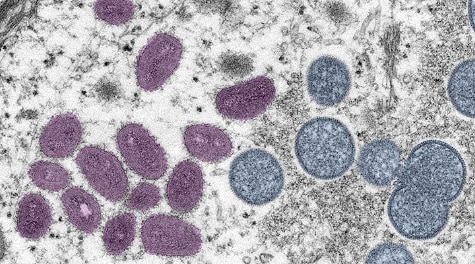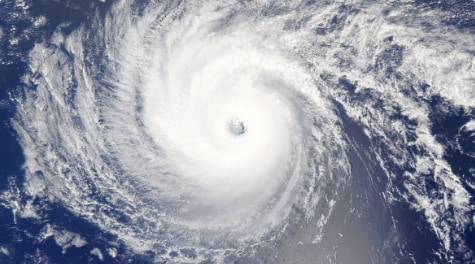CDC Public Health Crisis Response Funding
The Public Health Crisis Response cooperative agreement program increases the speed at which CDC can award funds to state, local, tribal, and territorial public health agencies in the event of a public health emergency. CDC established the Public Health Crisis Response funding mechanism in October 2017 to enhance the nation’s ability to rapidly respond to public health emergencies. CDC’s previous emergency response experience demonstrates that quickly awarding initial funding to support immediate response activities can effectively mitigate negative health outcomes.
Public Health Crisis Response funding is designed to support the surge needs of existing public health programs responding to a significant public health emergency. Through this funding mechanism, CDC establishes an “approved but unfunded” (ABU) roster of recipients that submit timely funding applications in response to a notice of funding opportunity (NOFO).
CDC awards funding once it has been determined a public health emergency exists or is considered imminent. Funding is contingent upon the availability and stipulations of appropriations or other funding sources. Not every jurisdiction on CDC’s ABU roster will be funded for every public health emergency; the size and scope of the emergency will help inform funding decisions.
CDC provides supplemental guidance to entities on the ABU list when the notice of funding opportunity (NOFO) is activated regarding specific activities intended to address the emergency. Recipients may also use funding awarded through this mechanism to re-establish capacity lost or diminished because of the public health crisis.
2022 Public Health Crisis Response NOFO
CDC released the 2022 Public Health Crisis Response NOFO (CDC-RFA-TP22-2201) in January 2022, with expanded eligibility criteria for local governments based on 2019 U.S. Census data. The NOFO is available on www.grants.gov. Eligible entities included
- 50 states;
- Eight U.S. territories and freely associated states;
- Local health departments that serve a county population of 2 million or more or serve a city population of 400,000 or more; and
- Federally recognized tribal governments that serve a population of 50,000 or more.
CDC reopened the Public Health Crisis Response funding announcement in August 2022 to allow for new submissions due to population changes and plans to reopen the funding announcement annually. CDC determines the Public Health Crisis Response Cooperative Agreement’s ABU roster following an objective review of the applications by CDC’s Office of Grant Services for eligibility and responsiveness criteria.
CDC uses this ABU list for emergencies that require federal support to effectively respond to, manage, and address identified public health threats. Recipients will only be funded when a public health emergency has occurred or is projected to impact the United States, and CDC determines there is a need to award funds under this NOFO for that specific emergency. The purpose of this NOFO is to rapidly mobilize and fund health departments for immediate response needs. Applicants listed on the ABU list will be able to receive expedited funding.
2022 ABU Roster
The 97 jurisdictions on the 2022 roster include the 50 states, eight territories and freely associated states, 38 local jurisdictions, and one tribal government. The 2022 roster expires January 31, 2027.
CDC Public Health Crisis Response Cooperative Agreement
2022 Roster of Approved but Unfunded Jurisdictions
50 States
- Alabama
- Alaska
- Arizona
- Arkansas
- California
- Colorado
- Connecticut
- Delaware
- Florida
- Georgia
- Hawaii
- Idaho
- Illinois
- Indiana
- Iowa
- Kansas
- Kentucky
- Louisiana
- Maine
- Maryland
- Massachusetts
- Michigan
- Minnesota
- Mississippi
- Missouri
- Montana
- Nebraska
- Nevada
- New Hampshire
- New Jersey
- New Mexico
- New York
- North Carolina
- North Dakota
- Ohio
- Oklahoma
- Oregon
- Pennsylvania
- Rhode Island
- South Carolina
- South Dakota
- Tennessee
- Texas
- Utah
- Vermont
- Virginia
- Washington
- West Virginia
- Wisconsin
- Wyoming
Tribal Governments
- Cherokee Nation, Oklahoma
U.S. Territories and Freely Associated States
- American Samoa
- Federated States of Micronesia
- Guam
- Northern Mariana Islands
- Puerto Rico
- Republic of the Marshall Islands
- Palau
- S. Virgin Islands
Local Health Departments
- Arizona: Maricopa County; Pima County
- California: Alameda County; Fresno County, San Diego County, Long Beach; Los Angeles County; Orange County; Riverside County; San Francisco; Santa Clara County
- Colorado: El Paso County
- Georgia: Fulton County
- Kentucky: Louisville
- Illinois: Chicago; Cook County
- Indiana: Marion County
- Maryland: Baltimore
- Massachusetts: Boston
- Michigan: Detroit
- Minnesota: Minneapolis
- Nevada: Southern Nevada Health District
- New York: New York City
- North Carolina: Mecklenburg County
- Ohio: Columbus
- Oklahoma: Oklahoma City-County; Tulsa
- Oregon: Multnomah County
- Pennsylvania: Philadelphia
- Texas: Austin; Dallas County; Harris County; Houston; San Antonio; Tarrant County
- Washington: Seattle; King County
- Washington, D.C.
- Wisconsin: Milwaukee



